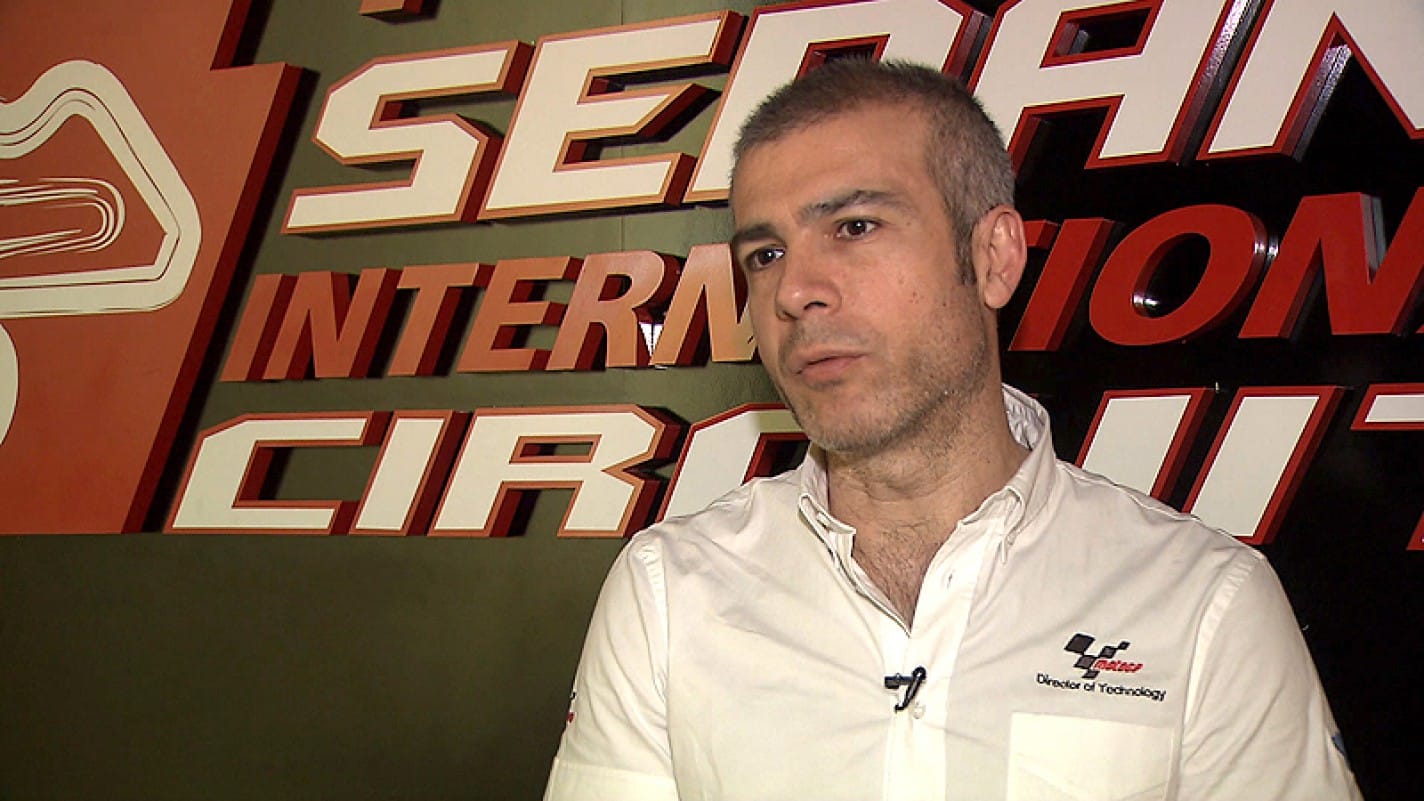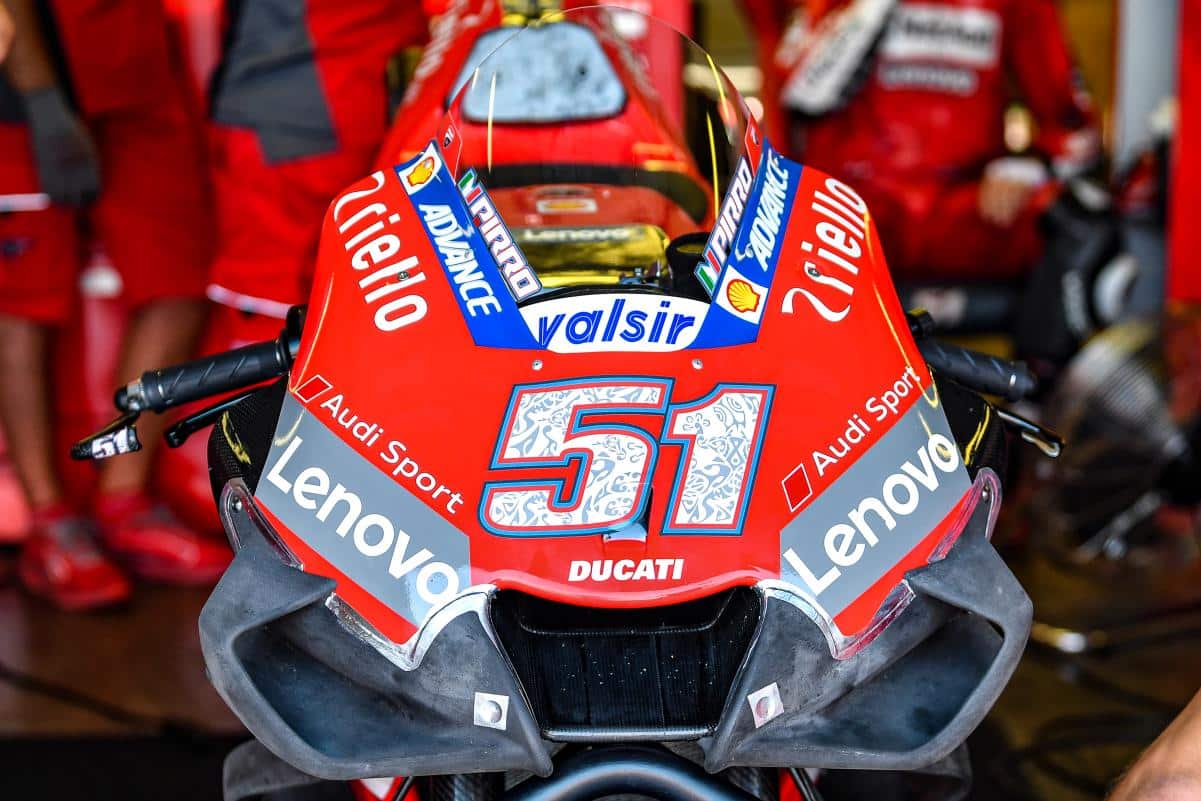It is a bone of contention, a Gordian knot to be resolved, a gray area to be illuminated that the Ducati reds have placed under a white light. Until then, aerodynamics on a motorcycle was not an exciting or passionate subject. But everything has changed to the point that at the start of the season, four manufacturers went to court to oppose one of their counterparts over a deflector on the swingarm. Officials therefore looked into the matter. Manager Cecchinelli delivered his copy. Here are the details…
It was said a few months ago that a new framework regarding the subject of aerodynamics in MotoGP had been established and dubbed by the builders. Interesting news about the atmosphere, but incomplete in substance. And for good reason, no details had been given on the merits. Here they are, from the site crash.net who put the technical man in the Grand Prix on the grill, Conrad Cecchinelli.
Here is what he tells us, starting with the famous deflector which caused the wind of discord to blow: “ it will still be legal, but it will now become an approved part " has explained Cecchinelli. “ As you know, we have divided the exterior of the bike into several areas which we call Aero Body. You are only allowed to make one design update to each Aero Body area during the season. Currently, there are two Aero Body areas: the fairing and the mudguard. Starting next year, another Aero Body area will cover the swingarm »
The consequence of this extension is as follows: “ If you change the baffle design, including simply removing it altogether, this will count as your update for the season in that region. » To avoid a repeat of the swingarm saga, the same restrictions regarding aerodynamic bodies will also apply to any other part of the motorcycle considered to have an "aerodynamic effect" »
A sensitive concept. Ducati rivals protested against 'deflector' on the grounds that it was “ mainly an aerodynamic device“. The Italian factory countered by presenting evidence that the main purpose of the device was to cool the rear tire, with the downforce described as an effect " secondary ". In fact, in 2020, an agreed definition will now be included in the regulation. “ There will be very complicated and, in some ways, still subjective wording to define "aerodynamic effect". But it will be much clearer than now " said Cecchinelli.
« Basically, every component or part of a component whose design is not necessary for its basic function will automatically be considered part of the aerodynamic body. This means that if you have a normal swingarm shape, this will not be considered part of the Aero Body, as this shape is intended for mechanical function only. But if you sculpted the surface of the swingarm using a unibody design to include the "baffle" in one piece, then the entire swingarm would become an integral part of the Aero Body. In this case, you will only be able to change the swingarm design once during the season. »

Cecchinelli also went into detail about dimensions, angles and radii. As for the main design of the fairing and associated wing attachments, Cecchinelli said “that in 2020, “ other dimensional constraints » would be added, in particular “ radii, angles and measurements » to constitute a foundation for the future. »
However, he warns: “ there will be a much smaller gray area, but there will still be a gray area . » All fairings currently seen on the track would still be legal next season, to avoid unfairly penalizing anyone. No one has to change their current conceptions. In every respect, we have checked existing fairing designs and set new, more precise limits using what currently exists, so that no one has to go back. »
Cecchinelli describes the steps taken for the 2020 rules as good work, but he knows new aerodynamic issues will eventually arise. “ Honestly, it wasn't difficult to find a good solution because the manufacturers were all very collaborative. But the manufacturers have a lot more people than us and their job is to go to extremes. Remember, Formula 1 has decades more experience with aerodynamic rules than we do and it still has problems. Someone is smarter and the organizer needs to catch up. It's part of the game . "
« Patches are always necessary, such as adding a software update for your mobile phone to deal with a changing situation. So the rules will have to be changed one day, but I hope as soon as possible. » Cecchinelli has in fact confirmed that no significant new technical rules are in preparation for the next five-year contract between the manufacturers and Dorna, which will begin in 2022.
« There is an agreement to aim for stability of technical rules during the duration of the current contract, which expires in 2021 " did he declare. " But we also intend not to change anything important at the start of the next term, starting in 2022. We are not just waiting for the current contract to expire before introducing something important for 2022. The plan is still consistent. » A plan which also applies in the Moto2 and Moto3 categories where technical stability is just as much a priority. On this subject, Cecchinelli finished : " we do not intend, in any of the categories, to make significant software developments. We're constantly changing little bits, but nothing major. This also means the Moto2 ECU will be the same next year, so no traction control »




